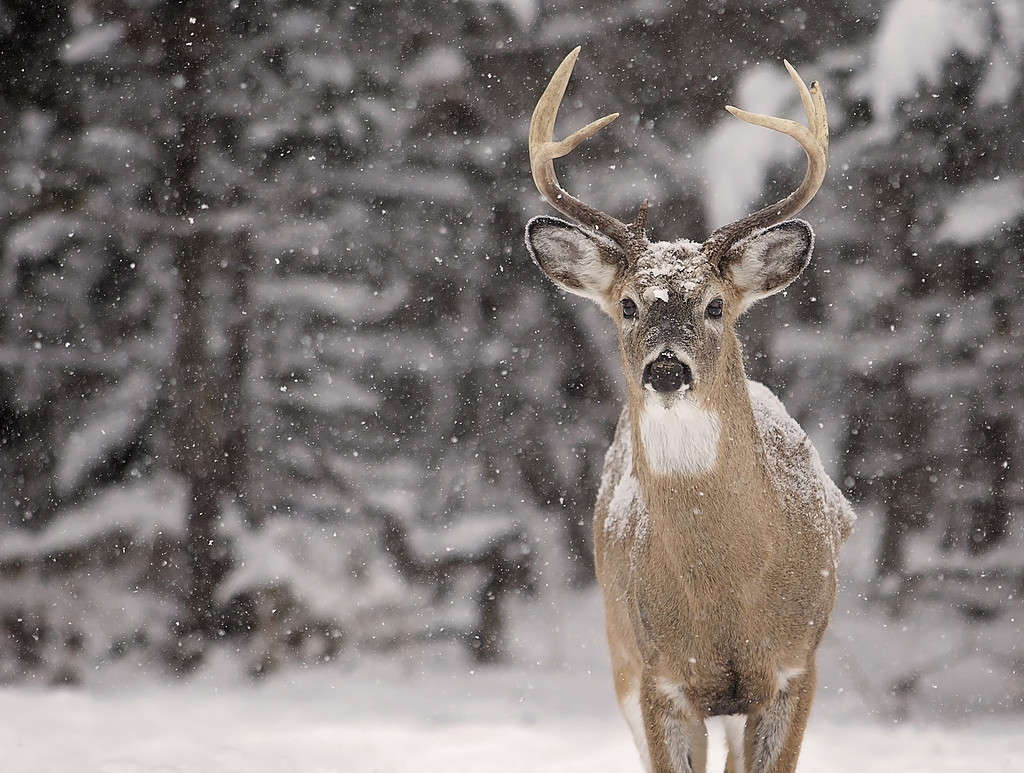Deer are some of the most graceful and intriguing animals found throughout most of the world. Being prey for various predatory animals such as wolves, bears, and even humans, deer are exceptionally secretive and silent animals. These traits are what makes them so widely loved and cherished by people, who often are left in awe at the sight of a deer in the wild.
Take a look below at the video that shows a deer using its agility and cunning to escape several attacks from a bear!
Check Out The Entire Video Below!
The clip begins by showing a lonesome deer standing in the middle of a shallow pond. It is a picturesque scene with lots of trees, plants, and peaceful scenery. The tranquil scene seems perfectly still until the camera pans to show a bear with its eyes locked on the deer. In a matter of moments, the bear begins to fully chase the deer, which causes it to run up the bank and into a surrounding forest.
Just when the chase seems over, the deer pops back out from the woods and dives once again into the pond. Similarly, the bear follows closely behind, even trying to swim through the pond after the animal. This chase continues for a matter of minutes as the pair weaves around the pond and through the forest. In the end, the bear is no match for the agility of the deer, and it runs away in shame. Likewise, the deer returns to the pond, glad it was able to swim another day!
Is It Normal Behavior For Bears to Attack in Water?

Polar bears
are amazing swimmers, and are built for it! This makes it normal behavior to see them attack prey in water.
©kristian brasel/Shutterstock.com
The short answer here is it depends on the species of bear. For example, polar bears and brown bears such as grizzlies are used to hunting prey near or in water.
So, those species would probably be the ones to follow a chase into a body of water. Polar bears and brown bears are great swimmers.
In fact, they have a layer closest to the body of dense fur that retains heat and repels ice and cold water. Actually, this small layer is actually not even fur at all, it’s labeled as clear, hollow tubes that resemble fur.
How Long Do Deer Live?

Hunters, predatory animals, harsh conditions, and disease all lower a deer’s natural lifespan.
©Jim Cumming/Shutterstock.com
Deer are extremely mysterious animals which can be a rare sight to see, especially in the light of day. Due to this, many people wonder how long they truly live in the wild.
Wild deer have a maximum lifespan of around 10 years, although many don’t reach it. Captive individuals can often live longer, with the oldest having reached the age of 20!
The majority of deer in the wild only live for around 3-6 years on average. This unfortunately small lifespan can be explained through a few different phenomena. Firstly, living in the wild is an extremely difficult task, especially if you are on the menu for so many animals. On top of having to struggle to find food and fight the weather, predators such as bears and wolves are always on the prowl for a meal.
Additionally, those who reside in areas that are popular for hunting also experience lower average lifespans.
Do Deer Travel in Groups?

Deer are very social animals who form groups during the Summer and Spring.
©Lynn_Bystrom/iStock via Getty Images
Deer are incredibly social animals who form groups for foraging, especially during the spring and summer months.
Most herds function with a hierarchy that emphasizes male leadership, especially males who are larger and older. During the breeding season, females, their associated young, and at least one male will often travel and forage together. During the winter, females tend to go alone or with their kids, while young males will venture off to form a breeding territory of their very own!
The photo featured at the top of this post is © David Byron Keener/Shutterstock.com
Thank you for reading! Have some feedback for us? Contact the AZ Animals editorial team.







